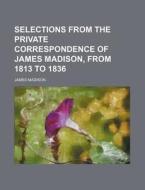
Maori culture
Taniwha, Mana, Tuatara, Kakapo, Taonga, Huia, New Zealand cuisine, New Zealand hip hop, Poi, One Tree Hill, New Zealand, Maori mythology, Maori tradit
- Editore:
Books LLC, Reference Series
- EAN:
9781156134863
- ISBN:
1156134862
- Pagine:
- 80
- Formato:
- Paperback
- Lingua:
- Inglese
Descrizione Maori culture
Source: Wikipedia. Pages: 80. Chapters: Taniwha, Mana, Tuatara, Kakapo, Taonga, Huia, New Zealand cuisine, New Zealand hip hop, Poi, One Tree Hill, New Zealand, Maori mythology, Maori traditional textiles, Whitehead, Apirana Ngata, Ta moko, Marae, Waka, Maori music, Witi Ihimaera, Maori Television, Mere, Kapa haka, Maori King Movement, Whakapapa, Tangata whenua, Moana, Ka Mate, Keri Hulme, This Horrid Practice, Black Grace, Pounamu, Te Reo, Ki-o-rahi, Taiaha, Powhiri, Jake "the Muss" Heke, New Zealand Maori Arts and Crafts Institute, Taua, Te Uenuku, Maori Television Service, Wharenui, Hone Taiapa, Rahui, Wairoa Maori Film Festival, Mokoia Island, List of Maori composers, Hangi, Korotangi, Patu, Kaitiaki, Maori poetry, Te Uruhina McGarvey-Tiakiwai, Kaka poria, Ngati Ranana, Koru Flag, Mu Torere, Taniko, Tohunga, Mount Taupiri, Karanga, Te Wharekura o Ruatoki Kapa Haka, Te Karere, Taha Maori, Boil-up, Wahaika, Toi Maori Aotearoa, Kotiate, Tikanga Maori, Whakairo, Tewhatewha, Karakia, Maripi, Hoeroa, Tapawai, Waka taua, Rewena bread. Excerpt: The Kakapo (Maori: kakapo, meaning night parrot), Strigops habroptila (Gray, 1845), also called owl parrot, is a species of large, flightless nocturnal parrot endemic to New Zealand. It has finely blotched yellow-green plumage, a distinct facial disc of sensory, vibrissa-like feathers, a large grey beak, short legs, large feet, and wings and a tail of relatively short length. A certain combination of traits makes it unique among its kind-it is the world's only flightless parrot, the heaviest parrot, nocturnal, herbivorous, visibly sexually dimorphic in body size, has a low basal metabolic rate, no male parental care, and is the only parrot to have a polygynous lek breeding system. It is also possibly one of the world's longest-living birds. Its anatomy typifies the tendency of bird evolution on oceanic islands, with few predators and abundant food: a generally robust physique, with accretion of thermodynamic efficiency at the expense of flight abilities, reduced wing muscles, and a diminished keel on the sternum. The Kakapo is critically endangered; as of February 2010, only 131 living individuals are known, most of which have been given names. The common ancestor of the Kakapo and the genus Nestor became isolated from the remaining parrot species when New Zealand broke off from Gondwana, around 82 million years ago. Around 70 million years ago, the kakapo diverged from the genus Nestor. In the absence of mammalian predators, it lost the ability to fly. Because of Polynesian and European colonisation and the introduction of predators such as cats, rats, and stoats, the Kakapo was almost wiped out. Conservation efforts began in the 1890s, but they were not very successful until the implementation of the Kakapo Recovery Plan in the 1980s. As of January 2009, surviving Kakapo are kept on two predator-free islands, Codfish (Whenua Hou) and Anchor islands, where they are closely monitored. Two large Fiordland islands, Resolution and Secretary, have been the subject of la




